Since the “winter” flight timetables have come into operation it has become more convenient for me to initially fly into Kaunas rather than into Vilnius for my business-related visits to Lithuania (something I have undertaken monthly now for nearly 14 years). This has meant I have had more time to look again around Kaunas, as my last visit there (with any free time) was just before the “pandemic”. Indeed, I am currently preparing a “postcard” from Kaunas but that is for another moment. In this article I propose to examine a much darker, more gruesome aspect of Lithuanian modern history that even inside Lithuania remains largely unknown.
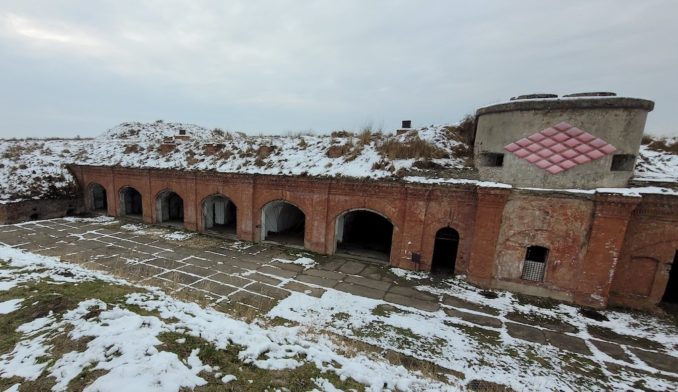
© Novak and Goode 2022, Going Postal
The Kaunas Forts Complex
Kaunas is a city in Central Lithuania and is a city surrounded by a fortress complex comprising 9 completed forts (4 more were planned but never built) all were constructed by Imperial Russia in the late C19th and all of the forts are still extant to a greater or lesser degree. During the period 1919 to 1939 Kaunas became the temporary capital of Lithuania following the outcome of 1919 Soviet war.
Originally the Kaunas forts were built to defend the western border of the Russian Empire from a possible war with Germany and Austria-Hungary, The Tsar chose Kaunas as the most strategically important and most westerly part of the Russian Empire. Kaunas is located at the confluence of two large rivers where water and land routes intersect (later supplemented by important railway lines).
Kaunas Fortress consisted of hundreds of objects: forts, batteries, warehouses, hospitals, churches, barracks, administrative buildings, in 1891 alone, 195 brick and 253 wooden military buildings were built in the territory of the fortress and 11 million rubles were spent on the construction of the fortress. In their own right the story of the forts is worthy of an article (or even 2) of its own.
At the beginning of the 20th century, forts I, II, III, IV and V were modernised and reinforced with concrete. Although it was the most modern fort complex in the Russian Empire, it was smashed in 11 days in 1915 by a more technologically advanced enemy. After WW1, the fortress buildings were later used for military and law enforcement purposes by both the First Lithuanian Republic and subsequent German/Russian occupying forces. Forts VII and IX currently exist as museums or tourist attractions, however one can find warnings online about not entering the buildings or structures of Fort II as unexploded ordinance and human remains can still be encountered.
The First Fort of Kaunas Fortress
This fort was built in 1882–1889 and again reconstructed in the late C19th/early C20th. The buildings are similar to the other 8 forts in Kaunas and follow the shape of a regular extended hexagon and are symmetrical in composition.
On top of the defensive mound, artillery and infantry battle positions were set up. In casemates under the defensive mound, ammunition dumps were installed. Barracks and inner courtyards were connected by external ditches and tunnels. For flank defence of the ditch, caponiers and semi-caponiers with interlocking fields of fire were installed. An external defence ditch was surrounded by a domed red brick wall. The 1st fort suffered major damage following the German offensive in 1915 and parts of it were badly smashed.
In the interwar period some squatters lived in the more habitable of the ruins whilst other parts of the fort became a “heavy prison”. In 1937 the squatters were removed and a gas chamber built in the abandoned ammunition dump area; this was used until the summer of 1940 for executions, During the 2nd Soviet occupation post-1944, the first fort became a Soviet secret area used by the Kaunas anti-aircraft defence brigade of the Baltic region whose activities during the 1960s/70s, included the maintenance of C-125 missiles. Early post-WW2 Soviet propaganda mentioned the gas chamber in an effort to discredit the pre-war Lithuanian regime but it is unknown if this was based on historical record or possession of the gas chamber building. What is clear is that by the time of Lithuanian independence in 1991 no traces remained of the gas chamber structure and any post-1940 records that might have existed had disappeared. No mention of the gas chamber can be found dating from the German occupation period (1941 – 1944) suggesting the Lithuanians themselves may have demolished it themselves just prior to or during the German invasion.
Currently, the territory of the fort is an open area approximately 4 or 5km from the old town centre. During the 2022 Kaunas European City of Culture celebrations, an art installation of lights was placed there. However, the fort area is in parts dangerous, there are open shafts into some ammunition magazines (with a 20ft drop for the unwary), uneven floors and broken steps in unlit tunnels along with many other hazards.
A UK H&S advisor would have a fit if they went there so if you ever visit tread carefully; if the Lithuanians have painted a warning on a wall not to enter a structure or marked an area with some hazard tape, I would heed the advice, as their threshold of “safe” can be lower than ours. It was noticeable that the interior of the fort is a maze or warren of unlit tunnels, chambers, shafts and rooms. Once one leaves an area that has some daylight you quickly go into total darkness and given there are reversed defensive bluffs at some tunnel entrances it is very possible to become disorientated. The thickness of the walls means you lose your phone signal immediately you enter the fort building. I would say do not enter any of the underground parts without a couple of torches and a map as if you get lost underground you might find that you cannot find your way out as there are no reference points you will recognise.

© Novak and Goode 2022, Going Postal
Disquiet
From the little information available it would appear that during the time of the 1st Lithuanian Republic (1919 – 1939) the Lithuanian Army were to start to resent being used as executioners for civilian prisoners and felt it was not their duty as it did not sit well with their professional calling. This feeling became more and more pronounced and in 1935 demands that the execution of civilians was handed over to civil justice structures or a specially hired person grew. When one considers the available execution methods (listed below) one can perhaps see why the Army wished to be excused from the role of executioners. In Lithuania until 1937 all judicial executions were performed by hanging or shooting, let us consider the weaknesses of each of these methods.
Hanging: “Short Drop”
Hanging using little or no drop was widely used until the late C19th and death was typically by strangulation, the prisoner could struggle in agony for several minutes after the drop and there are several recorded instances of revival after those hanged were cut down. Short drop hanging was common across Europe and requires little skill when compared to measured drop hanging. It is noted that during the hanging of von Ribbentrop (following the Nuremberg Trial) by an inexperienced American hangman (Master Sergeant John C Woods) that the measured drop was botched and von Ribbentrop was to struggle on the end of the rope for some 20 minutes. If a hanging were performed in pre-war Lithuania (or in Tsarist times), it was most likely to be of the short drop variety.
Hanging: “Long drop”
The long drop (or measured drop) was refined in the UK and is designed to break the prisoner’s neck by allowing them to fall a calculated distance (dependent upon their weight) and to be brought to a rapid halt by the rope, causing fracture/dislocation of the upper cervical vertebrae and crushing/severing the spinal cord, resulting in instant unconsciousness and ultimately death. Too much of a drop carries the risk of pulling the head off the unfortunate prisoner. If this method is performed correctly, it causes immediate paralysis and so the prisoner is not seen to struggle however it can take up to 25 minutes for heart and brain activity to cease. Measured drops were introduced into the UK in the late C19th but remained rare in other parts of the world (outside of the Empire) where short drop remained as the primary method
After WW2 some 200 prisoners (mostly German war criminals) were hanged (measured drop) at Hameln prison. Dr F.E. Buckland, (BAOR assistant director of pathology) examined some of the prisoners as soon as they had gone through the trap door and found, that although all were unconscious in some cases the heart continued to beat for up to 25 minutes. Following this the MO was instructed to inject 10cc of chloroform into the prisoner 30 seconds after going through the trap. When chloroform was injected heart activity ceased within seconds; this procedure was first used in December 1945. During 1946 more studies were made on groups of hanged prisoners (who were not immediately injected) using an electrocardiograph; measurable heart activity of up to 25 minutes was observed. During these examinations, two men started breathing and had to be injected with chloroform, in one case, breathing resumed 7 1/2 minutes after execution.
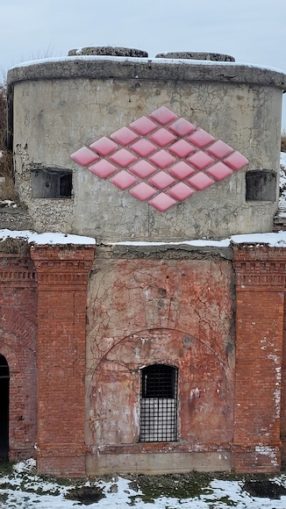
© Novak and Goode 2022, Going Postal
Shooting
Typically, this method is often performed by a group of shooters (Firing Squad) or by a targeted single shot to the heart or the back of the head. Again, neither method guarantees instant death and it was not uncommon for the OIC (Firing Party) to have to draw their sidearm (following the group volley) and administer a coup de grace by putting an additional round into the head of the prisoner being executed as the volley can be inaccurate, especially if those shooting are “pressed” into the job and subsequently aim wide.
A single targeted headshot was common in German and Soviet executions but again did not always immediately kill, indeed in Soviet accounts there is a record of a soldier being shot in the back of the head in front of his regiment after being captured following desertion; his body was then thrown into a pit. He is noted as walking into the tent of his Commanding Officer some hours later and asking for a 2nd chance to prove himself, however the record reports he was taken outside and shot again in the head for a second and final time.
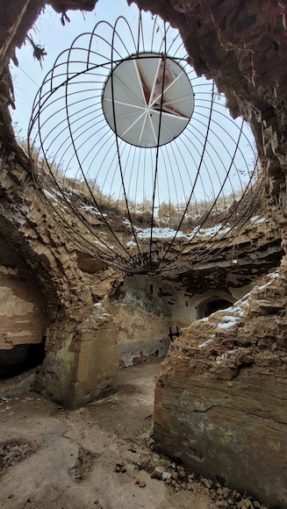
© Novak and Goode 2022, Going Postal
Gassing
In early 1924 Nevada started to experiment with gas as a method of execution. The Americans chose hydrogen cyanide as the toxic agent and started to build gas chambers in some prisons. It was soon realised that cyanide-based execution can be as deadly to those observing the execution as to those on which it is being performed and that the cost of building gas chambers was hugely expensive requiring completely air-tight structures and sophisticated ventilation and decontamination equipment that had to be maintained as such. In addition, to prevent cyanide gas from condensing, the execution area has to be maintained at 80 degrees F and any sources of ignition such as electrical switches or lights have to be explosion-proof as hydrogen cyanide gas is explosive
Results using gas were disappointing with average death times being around 10 to 15 minutes, whilst observers were required to watch the struggles of the poor prisoner strapped to a chair inside the gas chamber, however it was not until 1999 that the last gas execution occurred in Arizona.
Outside of the USA both Germany and Soviet Russia have established track records of gassing. In Russia prior to WW2, during the Stalinist Terror, prisoners being transported by van for execution at shooting ranges outside of Moscow were gassed with exhaust fumes en route as half-dead or dead prisoners on arrival at the shooting ground were less of a threat to their executioners. German use of gas is a feature of both Aktion T4 (carbon monoxide) and at camps in Poland (carbon monoxide and hydrogen cyanide) during WW2.
As you can see, being involved in any execution using one of these methods is not straightforward and can be harrowing, therefore one can perhaps see why Lithuanian career soldiers felt it should not be within their remit to execute civilians.
Lithuanian Executions
Until 1919 hanging was the most common method of execution in Lithuania, after this date criminals convicted and sentenced were told they were to be hanged but were invariably shot by the soldiers from the Kaunas Battalion at one of the Kaunas forts.
The disquiet of the Army further came into view after the Sulwalki farmers strike in 1935/6 when the army were called upon to execute the ringleaders as “terrorists” (up until then most of those executed were convicted murderers), the Army resented involvement in “political” killings. In 1937 tensions around who should conduct executions came to a head and a special commission was established to review the matter. The commission was tasked to select a method of execution from;
- Hanging
- Shooting
- Gas
- Electric chair
- Self-ingestion by the condemned of poison via a meal or drink
They were also asked to review and recommend a civilian structure within which responsibility for the organisation and the conduct of executions should be placed. After much discussion (which even included the possible abolition of the death penalty), the committee recommended (in January 1937) the use of gas or the provision of poison for self-administration by the condemned as an execution method. By February the provision of poison had been dropped leaving gassing as the only approved method of execution. It seemed the committee felt that hanging, shooting and electrocution were too brutal as potential methods but wished to use a less barbaric method which however would still leave a strong enough impression to potentially deter criminality.
The committee also decided that the execution should be conducted in a non-public place such as a prison. Overall responsibility for the execution lay with the Ministry of Justice and stipulated the execution was to be attended by the District Court Prosecutor, the District Court Clerk (to read the sentence of death) and a doctor; a priest could also be present if requested by the condemned; the prosecutor was required to supervise the procedure for enforcing the sentence. Lieutenant Colonel Vytautas Steponaitis reported to the committee that “although the gas does not kill the person suddenly, it has no odour and works pleasantly. Without feeling pain, a person quickly loses consciousness and dies after about half an hour”. It was felt to be a practical solution as the execution required only a chamber and a gas cylinder from which compressed gas is released.
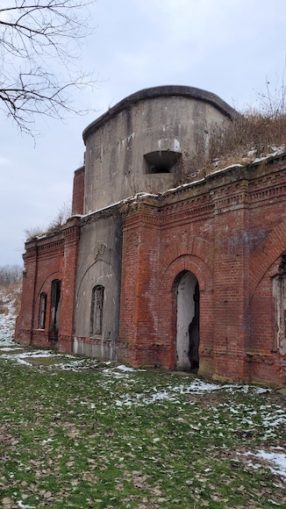
© Novak and Goode 2022, Going Postal
The Lithuanian Gas Chamber
The Ministry of Justice planned to build a gas chamber in a remote location in Kaunas, chosen by the court prosecutor’s office. Construction took place secretly at Fort I near Kaunas at Aleksotas. All civilians were removed from the Fort area and signs appeared next to the barbed wire fence prohibiting entry; all the preparations were kept secret and to put people off the scent the press reported the gas chamber was in Fort IX or did not mention the location. The executions were to be conducted at night or in the early mornings, in order to keep them from view. The gas chamber complex consisted of two small brick-built rooms. The first larger room was where religious rites were to be performed, and the death penalty read. From this a door led into a second smaller box-shaped room 1.94m long, 1.26m wide and 2m in height, this room was equipped with a tight-fitting door. In addition, there were two peepholes; one at eye level, the second 30cm above the level of the floor. On the bottom of the left-hand wall of the chamber was an inlet pipe attached to a gas regulator and a bottle of gas, the gas type is not specified but the description of the gassing process given to the committee suggests it was carbon monoxide rather than hydrogen cyanide. In the ceiling there was a 30cm diameter pipe to release gas to the atmosphere following execution.
Once news of the decision reached the foreign press the Lithuanian Government received two requests from German citizens (and eight requests from Holland) asking to be appointed as executioners. These applications were not considered as construction had not begun and it was felt the post should be held by a Lithuanian. Once the decision of the committee was announced it was criticised in the British press as being inhumane due to the time taken for death to occur in American gas executions, even when a very toxic gas (hydrogen cyanide) was used.
Eventually the Ministry appointed John Pakalnis as the “gas operator”, he had served as a commander in the Russian Army during WW1 as such he received a salary of 350 Litas per month. He was born in 1894 in the Lithuanian county of Utena, and now lived in close proximity to Fort I. He had been previously arrested on at least 2 occasions for being drunk and for firing his pistol into the air, he would typically arrive at the fort on horseback.
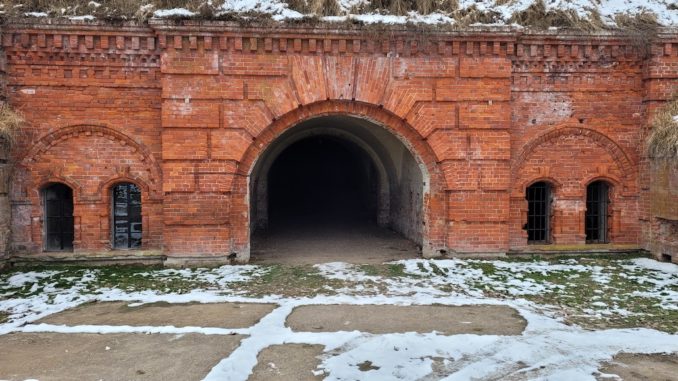
© Novak and Goode 2022, Going Postal
The Execution Process and Procedure
Once convicted and sentenced the prisoner was transferred to the 95th Kaunas Heavy Prison but they were not notified of the planned date of execution. Given there were avenues of appeal and pardon these had to be exhausted if the prisoner wished to make an appeal as the process around these activities naturally took some time. The designed procedure stated that immediately prior to the execution occurring the prisoner was to be asked to attend the “prison office” which was actually the ante-room to the gas chamber.
The designed procedure stated that once the prisoner reached the gas chamber ante-room, the clerk would confirm to the prisoner that all appeals/routes of pardon had failed and the prisoner was to be executed imminently. The designed process at this juncture called for the prisoner to be asked if they wished to see a priest for confession. However, at this point of the process another dispute arose; the clergy raised concerns about the prisoner having to make their confession and take last rites in a room full of people (doctor, prosecutor, prosecutor’s clerk, executioner, guards and so on) and they felt that value of the confession might be compromised. Given that Lithuania can be exceedingly cold it was felt that making the officials and guards stand outside in what can be sub-zero temperatures (for the hour requested by the clergy as being sufficient) was not realistic.
In addition, there was an argument within the clergy as to whether military prisoners should be attended to by a military chaplain rather than a civilian priest. Eventually it was agreed that those sentenced by a military court would see a military chaplain and that the priest or chaplain would take confession for no more than an hour in the prisoner’s cell prior to transfer to the gas chamber ante-room. The process was still imperfect in some respects as the prisoner was not to realise this would be their final confession until they reached the ante-room. However once confession was complete the prisoner was taken to the gas chamber ante-room where sentence was confirmed, they were then put into the gas chamber, the door closed and the gas released.
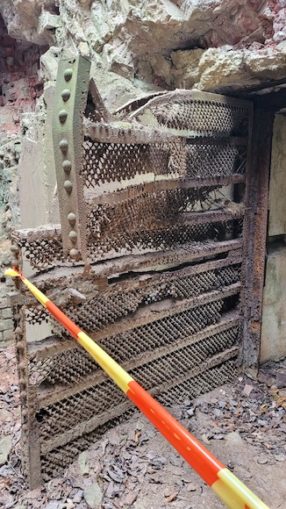
© Novak and Goode 2022, Going Postal
The death was monitored by those present. Some time after death had been assured the gas chamber was ventilated and the corpse removed. The gas chamber victims were buried without coffins in a ditch around the fort. It is reported that during the summer of 1938 the water in the ditch dried out and the head of one of the executed became visible. After this those buried in the ditch were exhumed and reburied in one of the defensive slopes surrounding the fort where it would seem they remain until this day; none of the burial places were marked.
From the records that exist it would seem that between July 1937 and June 1940 some 9 prisoners are known to have been put to death in the gas chamber. All of those executed had been found guilty of murder (in some cases multiple murders) as well as theft. One of those executed was sentenced for murder, subversion and terrorism by being involved in a strike action.
Many details of the actual procedure applied however are still unclear, it is not known if the prisoner was restrained before being put into the chamber, or whether there was a bench or chair in the chamber to which the condemned might be attached (in the USA prisoners were tightly strapped into a frame chair). The type of gas utilised is still not confirmed, (a contemporary account refers to it as “smouldering gas”); given it was released from a cylinder and that no special measures were required to neutralise the chamber or to handle the corpse it seems most likely that CO was the killing agent. Also, it is again not clear how long it took the prisoner to become unconscious, did they shout and bang on the door for some minutes after the gas was released? The lack of answers to these points makes me think the process was not as “peaceful” as was hoped for by the committee that selected and recommended this method of execution. In conclusion, it would appear that a “committee” is the least suitable body to recommend and design an execution procedure.
In compiling this article, I have spoken with many of my Lithuanian colleagues’ friends and acquaintances and apart from one historian none of them knew anything about this subject. I suspect whatever records that exist went back to the Soviet Union when the Soviets left Lithuania in 1991 and are sitting in a KGB achieve awaiting discovery. With regards to the photographs that accompany this text please note they were taken on a bitterly cold day where the temperature was minus 7 before the windchill was taken into account; had the weather been warmer I would have gathered more but given the blanketing of snow much external detail of the site was obscured and being aware of the potential hazards in the area I was reluctant to wander too far from the visible track.
With acknowledgements to S. Cerneviciute.
© Novak and Goode 2022



